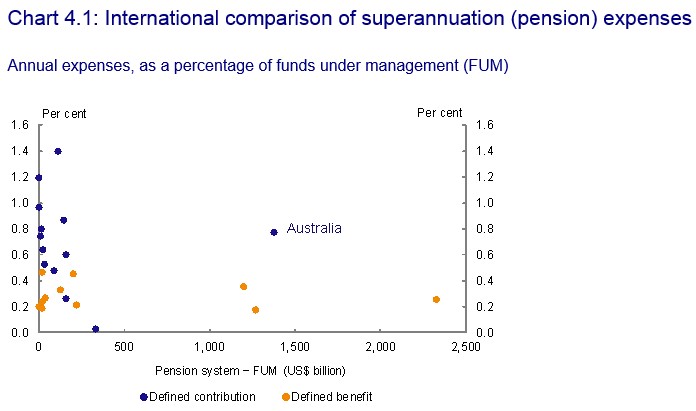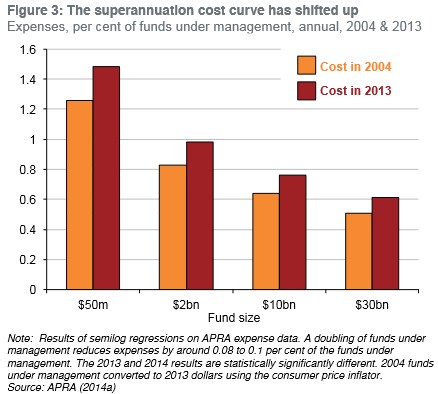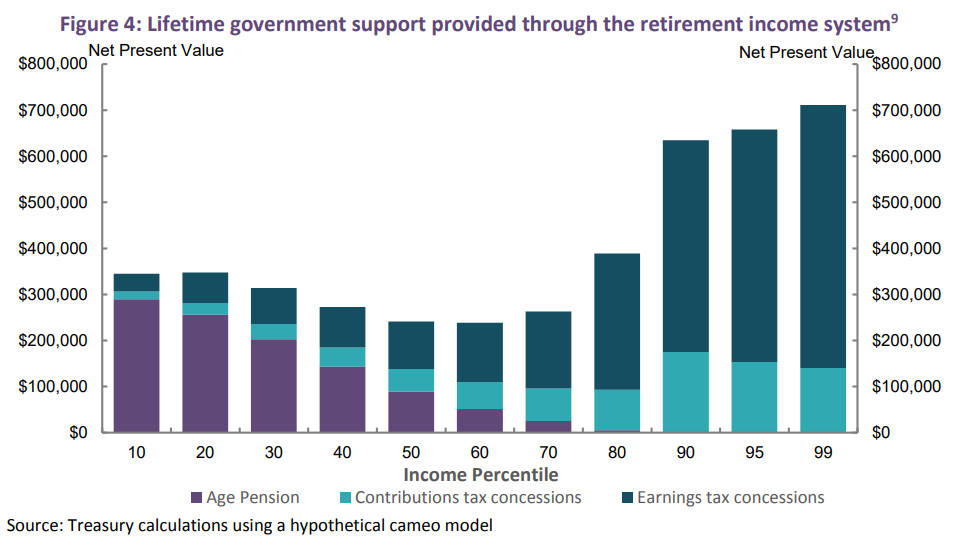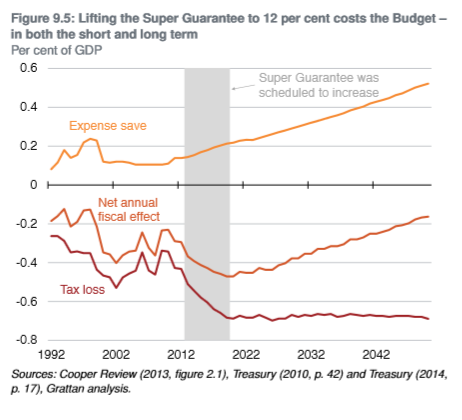Former Treasurer and chairman of the Future Fund, Peter Costello, is the latest to question the efficiency of Australia’s compulsory superannuation system, claiming that superannuation is not a genuine market and that it produces “inefficient” outcomes:
Australia’s super system is not a genuine market and many retirement products are “inefficient”, Future Fund chair Peter Costello said…
It is driven by contributions legislation, which means by law 9.5 per cent of wages are taken out of people’s pay packets,’’ Mr Costello said.
“People don’t shop around, so there’s not a whole lot of competition [for contributions]”…
The emphasis in the super system “has been on getting money in” and retirement products offered by funds “are not always efficient”, Mr Costello said.
Australia’s compulsory superannuation system is a highly inefficient monster that is sucking funds from both the Federal Budget and workers for the benefit of the rent-seeking industry.
The evidence is undeniable.
If superannuation were a well functioning and competitive market, average fees would have fallen as the value of funds under management (FUM) has ballooned. After all, it should not cost ten times more to manage $1 billion FUM than it does to manage $100 million FUM – that is, basic economies of scale.
Yet, despite the massive growth of FUM since the superannuation guarantee (compulsory superannuation) was first introduced in 1993, average fees and expenses have barely changed and they are way above international benchmarks:

Australia’s superannuation system has also become less efficient as it has ballooned in size, as illustrated by the Grattan Institute:

Then there is the inefficient way that superannuation concessions are distributed, which perversely gives the most benefit to those that need it least (i.e. high income earners), as illustrated clearly in the next chart from the Australian Treasury:

Accordingly, the superannuation system costs the federal budget ($43 billion a year currently) more than it saves in Aged Pension costs, as explicitly noted by the Henry Tax Review:
“An increase in the superannuation guarantee would … have a net cost to government revenue even over the long term (that is, the loss of income tax revenue would not be replaced fully by an increase in superannuation tax collections or a reduction in Age Pension costs).”
The Grattan Institute also noted that over “both the short and long term, superannuation tax breaks cost the budget more than they save in pension payments”:
Finally, there is the massive economic waste embedded in Australia’s superannuation system.
Australians spend twice as much every year in management fees for their superannuation than they do on electricity. However, because these fees are hidden from view, few people realise it.
The huge honey pot of fees available under the compulsory superannuation system has created a giant parasitic industry that now rivals Australia’s Defence Force, as noted by Dr Cameron Murray:
Since 2012 the number of jobs in the super sector has climbed steadily from 48,000 to 55,200 in 2018, while the number of permanent defence force personnel has flatlined around 58,000, according to analysis by Dr Cameron Murray, an economist at the University of Sydney.
“Super fees in 2018 were $34bn, compared to $36bn for the total defence force, but that figure includes a 19,000 strong defence bureaucracy and army reservists,” he said, adding it was “madness to waste vast economic resources on an unnecessary accounting exercise”…
Dr Murray said the super system had reduced Australia’s productivity “by dragging an enormous workforce away from other productive activities, making us less able to support retirees”.
Only 33,000 staff work at the Department of Human Services, which administers the age pension along with all national welfare programs, including Medicare, Dr Murray said.
“This comprehensive welfare system costs just $6bn per year to manage — one-sixth the management cost of superannuation,” he said.
Peter Costello is right. Australia’s superannuation system has grown into an inefficient monster that must be tamed.


